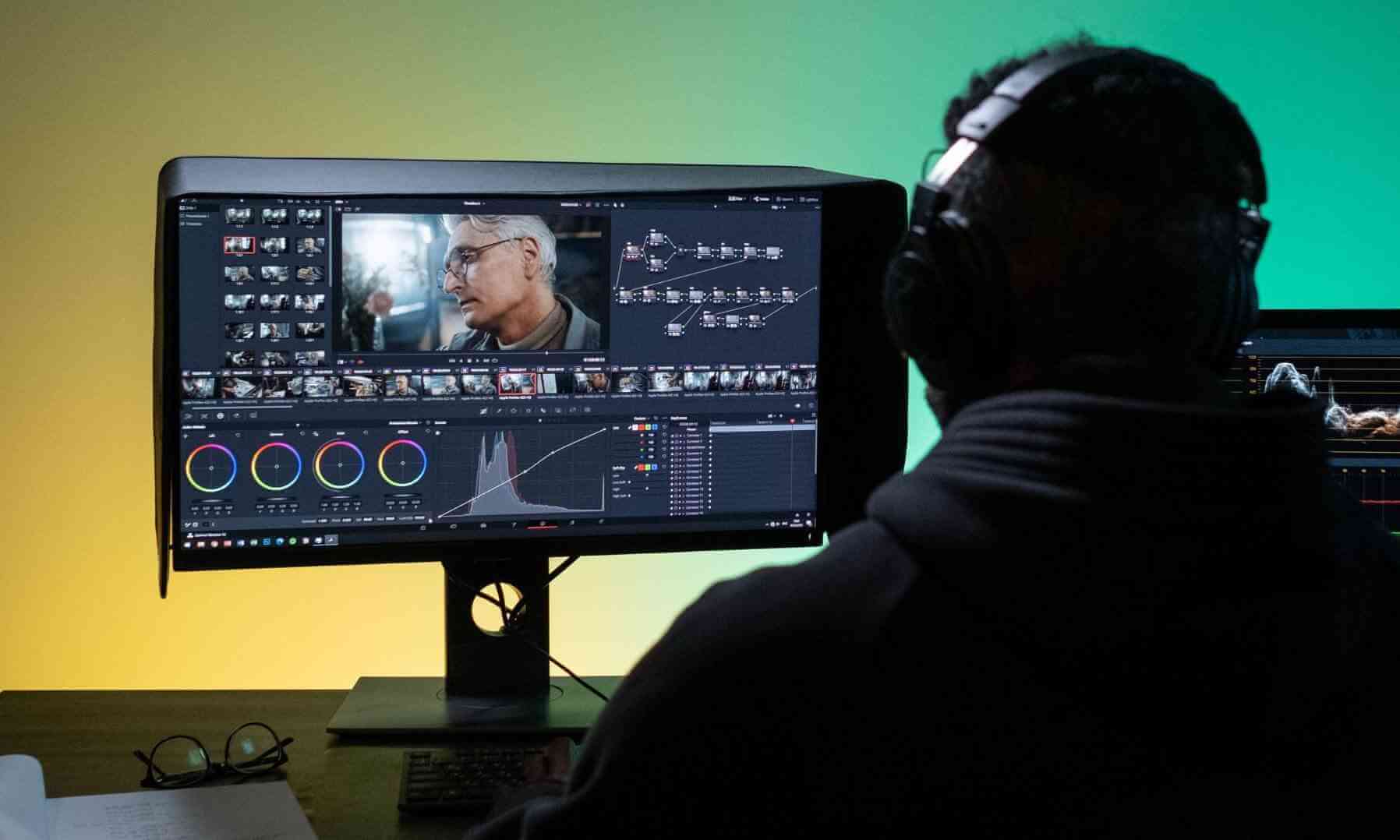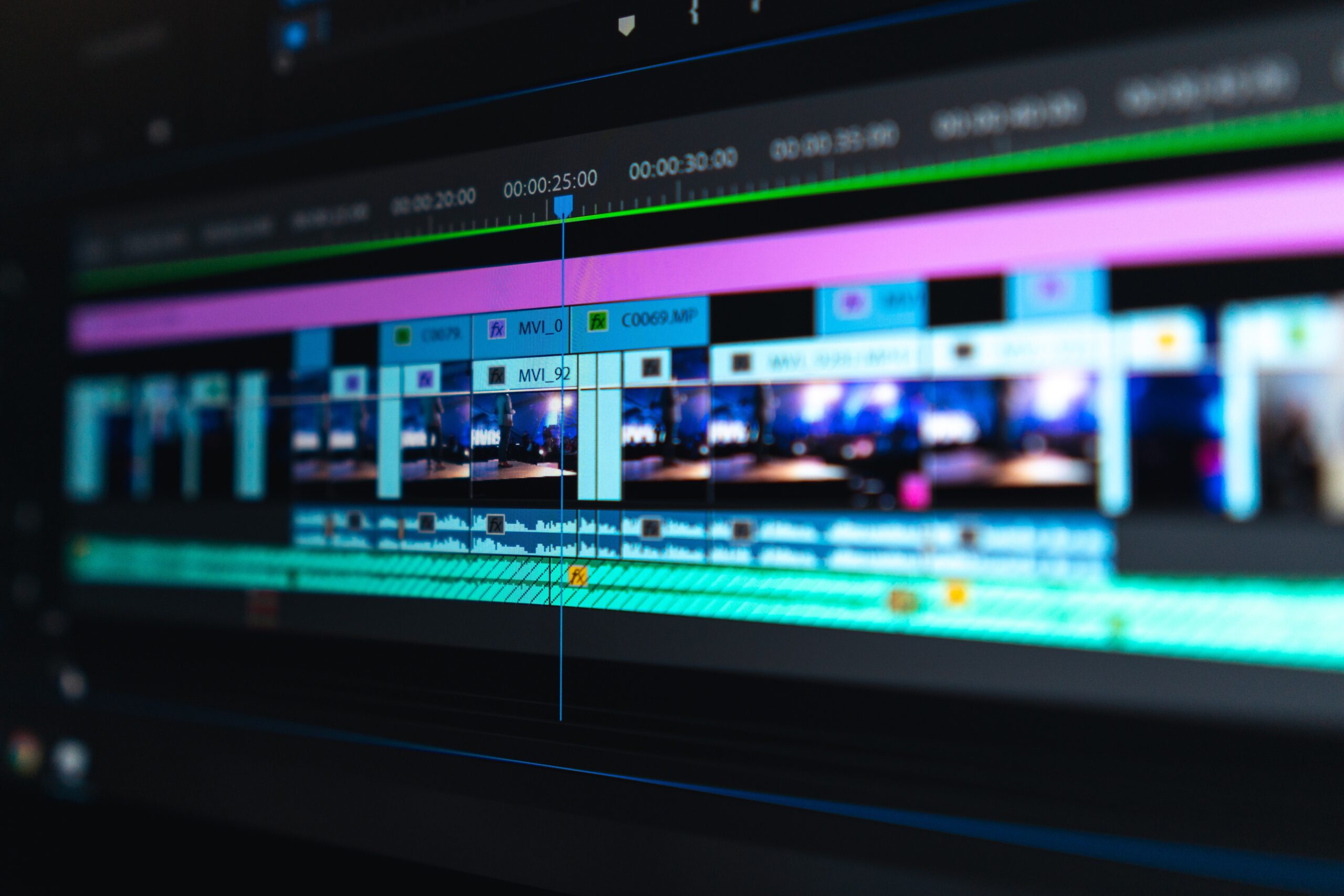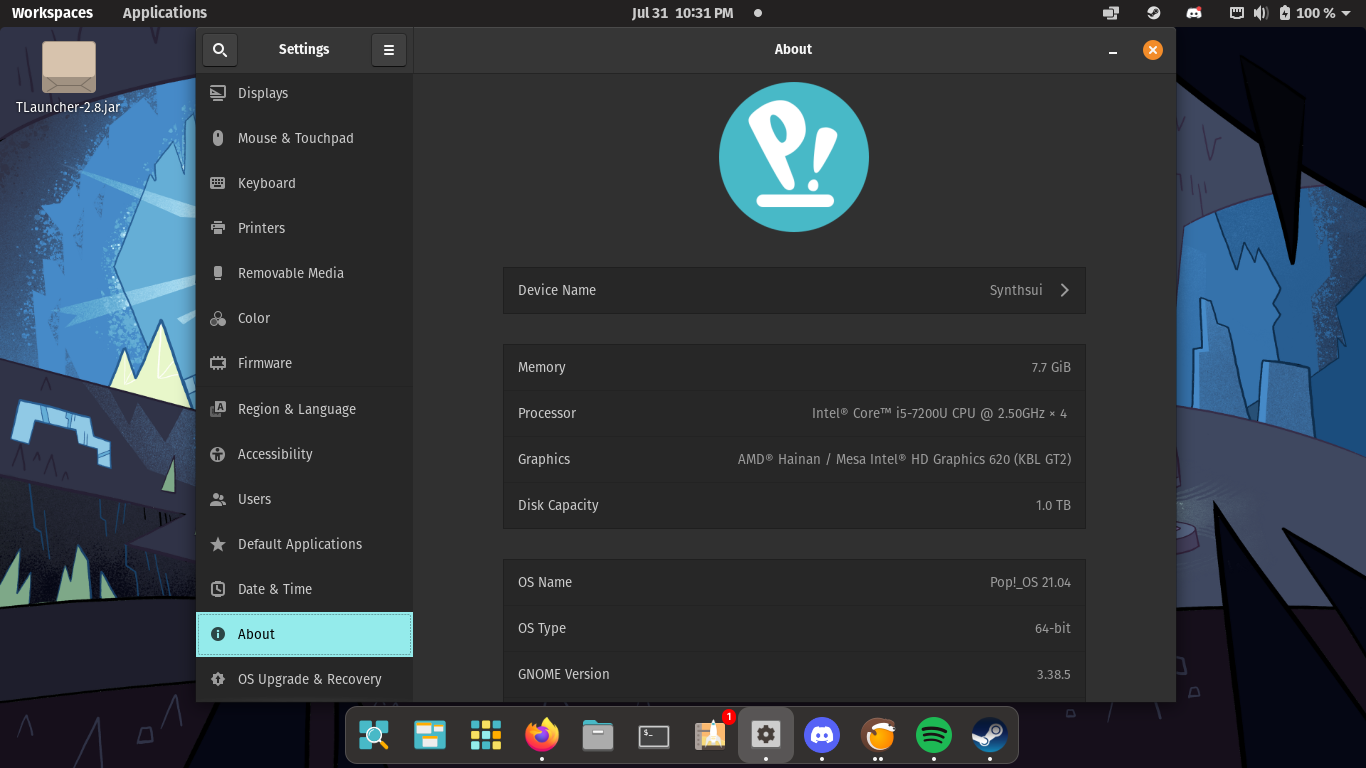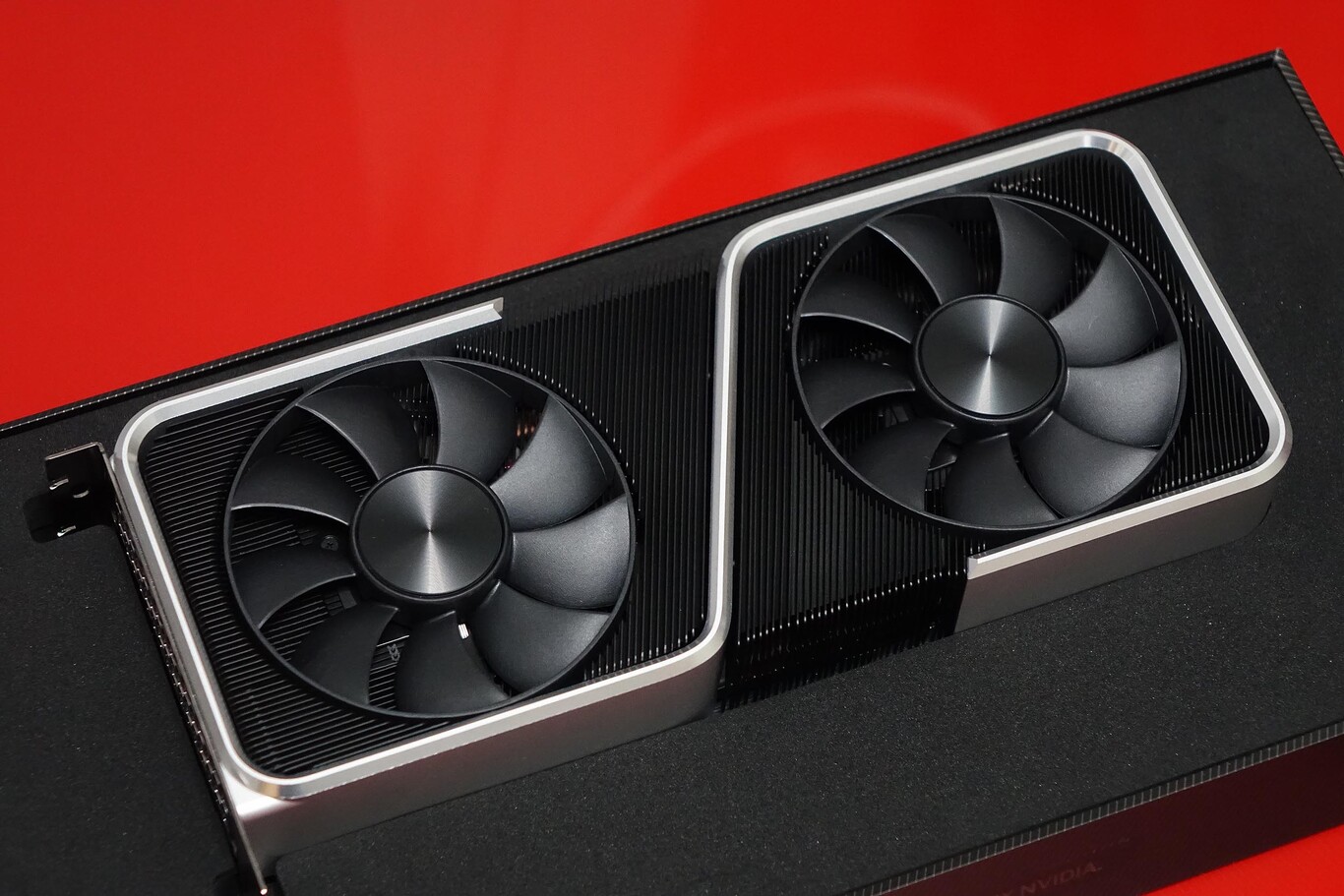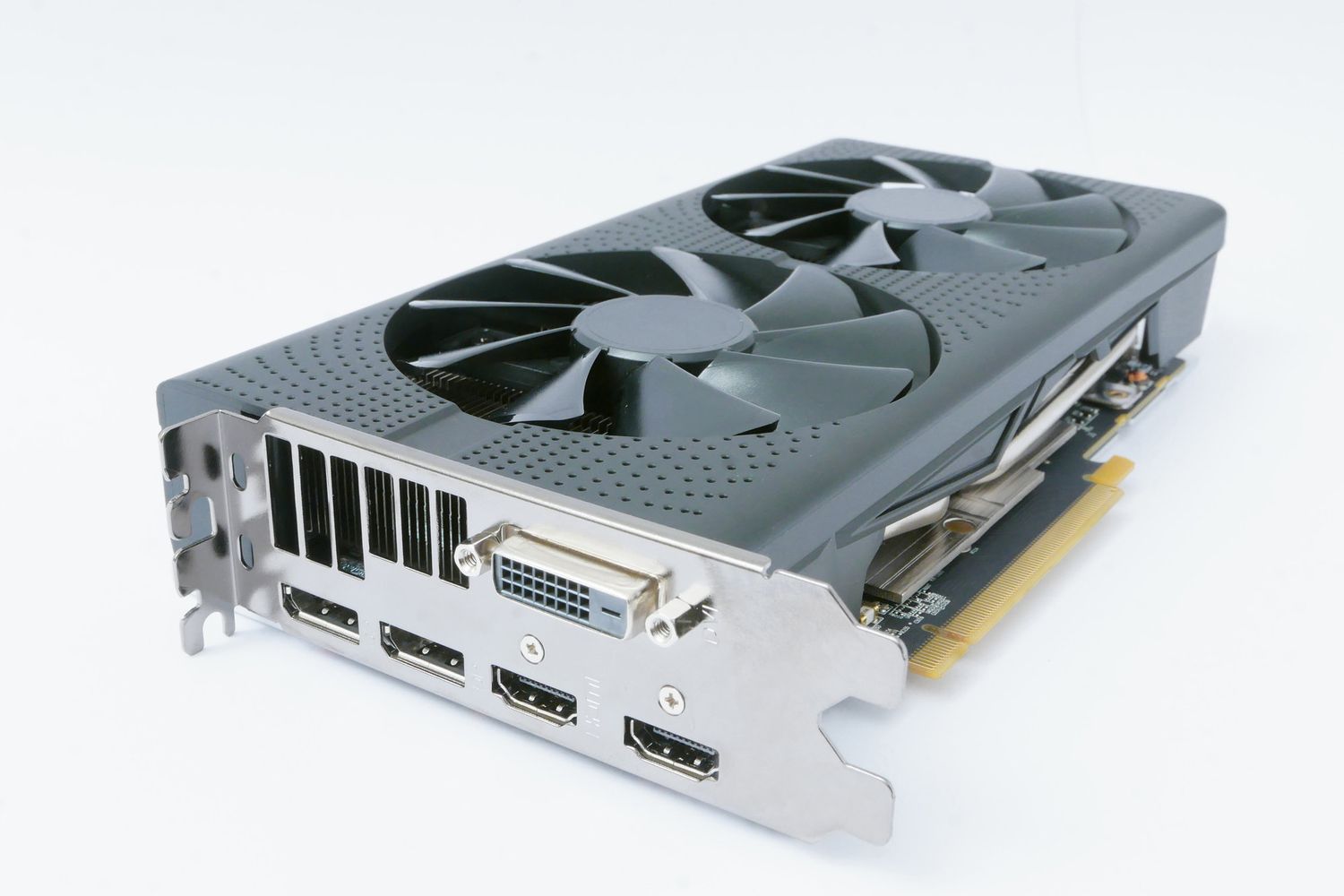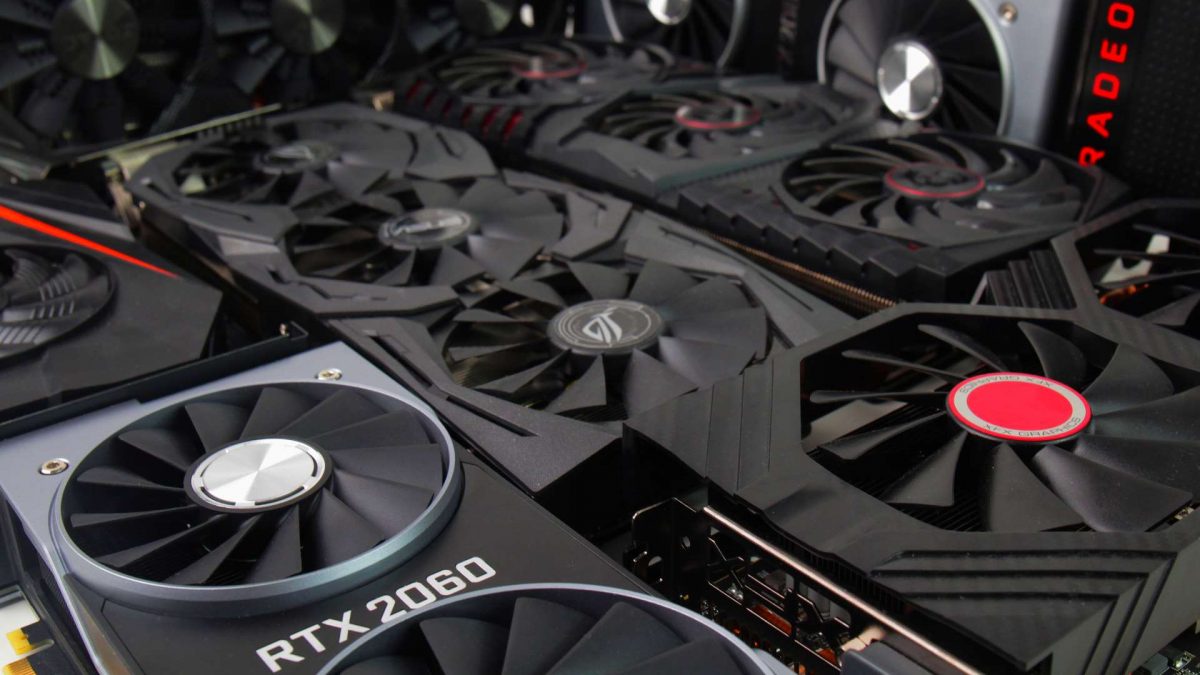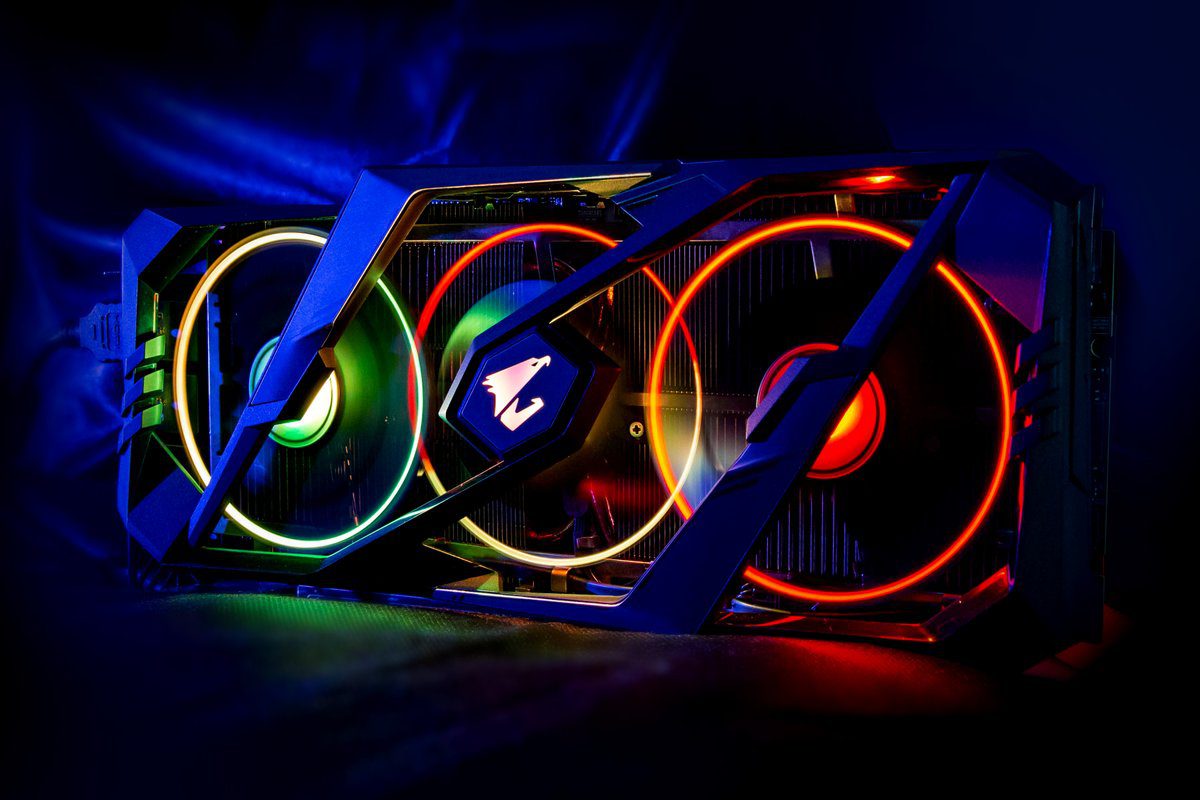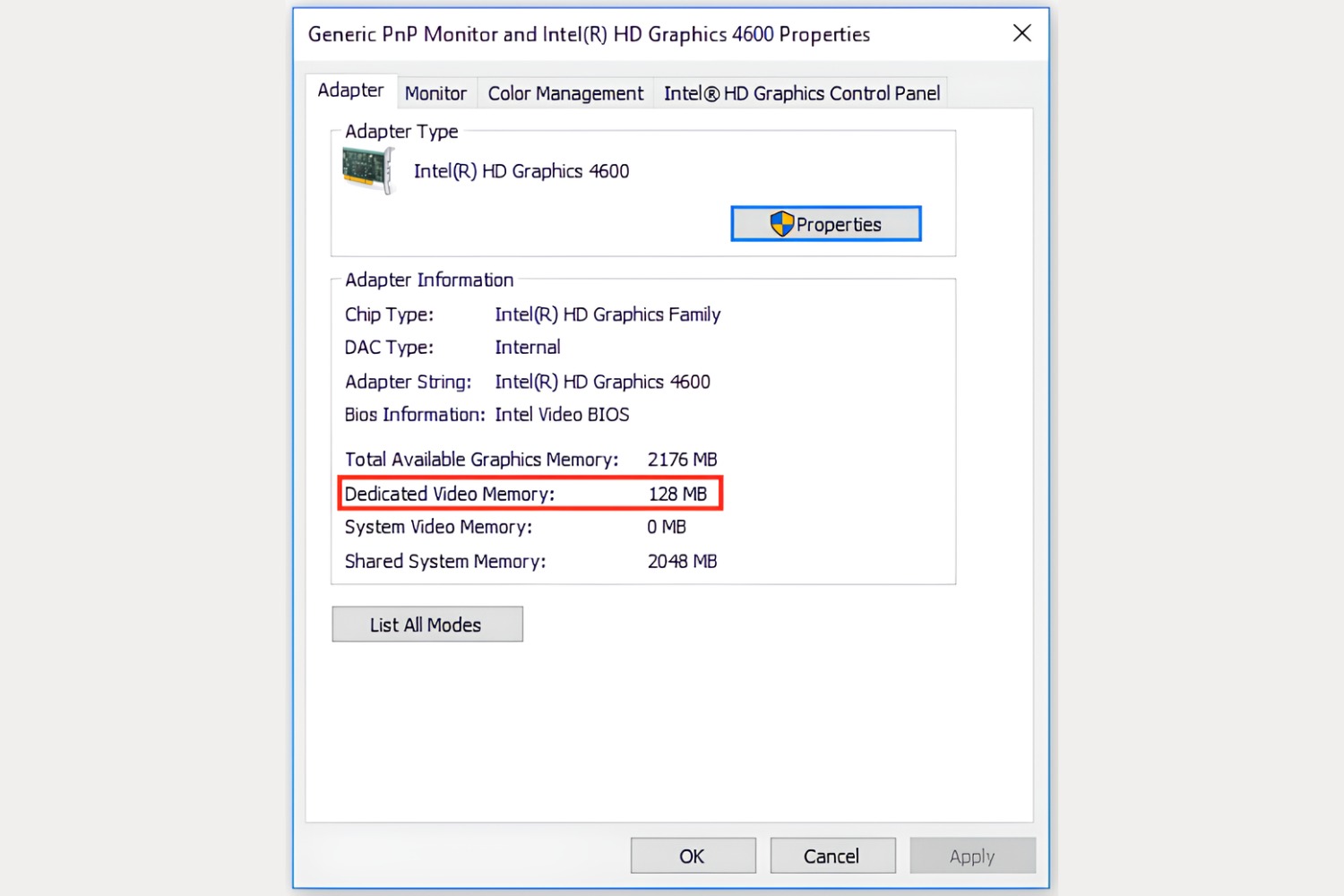Introduction
A graphics card has become an essential component in the world of video editing. With the increasing popularity of high-definition and 4K resolution videos, the demands on editing software and hardware have grown significantly. A graphics card, also known as a GPU (Graphics Processing Unit), plays a crucial role in providing the necessary power and capabilities to handle the intricate tasks involved in video editing.
But what exactly is a graphics card? Simply put, it is a specialized expansion card that is installed in a computer to handle the complex calculations related to rendering images, animations, and videos. In video editing, the graphics card offloads the processing power required for tasks such as applying effects, color correction, and rendering the final output.
Now, you may wonder why a graphics card is important for video editing. The answer lies in the numerous benefits it brings to the table, including improved performance, enhanced visual effects, a smoother editing experience, and compatibility with video editing software.
In this article, we will delve deeper into the importance of a graphics card for video editing and explore the specific advantages it offers to professionals and hobbyists alike. Whether you’re a seasoned editor or just starting out, understanding the role of a graphics card in video editing can greatly enhance your editing workflow and overall productivity.
If you’re ready to take your video editing skills to the next level, let’s dive right into why a graphics card is crucial for your endeavors.
What is a graphics card?
A graphics card, also known as a GPU (Graphics Processing Unit), is a specialized hardware component designed to handle the complex calculations and computations required for rendering images, animations, and videos. It serves as a dedicated processor for graphics-related tasks, taking the burden off the computer’s central processing unit (CPU) and ensuring smooth and efficient performance.
The graphics card consists of a printed circuit board that houses the GPU, its memory, and other components. It is equipped with multiple cores or shaders, which are responsible for executing parallel calculations required for graphics rendering. These cores enable the graphics card to quickly process and manipulate vast amounts of visual data, making it indispensable for tasks like video editing.
Modern graphics cards come in various forms, including discrete cards that need to be installed in a computer’s expansion slot and integrated cards that are built into the motherboard. Discrete graphics cards typically offer higher performance and more advanced features, making them the preferred choice for demanding applications like video editing.
Alongside the GPU, graphics cards also include dedicated VRAM (video random access memory), which is specialized memory used to store and process graphical data. The VRAM ensures quick access to the data required for rendering images, resulting in faster processing times and smoother performance.
Furthermore, graphics cards often include additional technologies like CUDA (Compute Unified Device Architecture) or OpenCL (Open Computing Language) that leverage the GPU’s processing power for general-purpose computing tasks. These technologies enable software developers to optimize their applications and take advantage of the graphics card’s parallel processing capabilities, enhancing overall performance and efficiency.
In summary, a graphics card is an essential component for any computer system involved in graphics-intensive tasks like video editing. Its role in accelerating computations, rendering visual effects, and processing large amounts of graphical data is paramount in achieving high-quality and professional results.
Why is a graphics card important for video editing?
A graphics card plays a crucial role in video editing, providing several key advantages for professionals and enthusiasts alike. Let’s explore why a graphics card is important for video editing:
Improved performance and faster rendering: Video editing involves processing large amounts of data, such as high-resolution videos, complex effects, and transitions. A powerful graphics card significantly speeds up the rendering process by offloading the computational tasks from the CPU to the GPU. This parallel processing capability allows for faster editing and rendering times, enabling editors to work more efficiently and deliver projects on time.
Enhanced visual effects and real-time previews: A graphics card is essential for applying and previewing high-quality visual effects in real-time. Tasks like color grading, 3D rendering, and motion graphics require a significant amount of computing power, and a capable graphics card can handle these tasks effortlessly. With real-time previews, editors can see the effects being applied instantaneously, simplifying the editing process and allowing for quick adjustments and refinements.
Smooth editing experience and better timeline scrubbing: Video editing software relies heavily on the graphics card for smooth playback and responsive timeline scrubbing. A powerful graphics card ensures that the editing software can handle multiple video tracks, effects, and transitions without stuttering or lagging. This allows editors to navigate through the timeline seamlessly, making precise edits without any disruption to their creative flow.
Compatibility and support for video editing software: Many video editing software applications are optimized to take advantage of the GPU’s processing power. They utilize specific features and functionalities provided by the graphics card to enhance performance and enable advanced editing capabilities. Having a compatible graphics card ensures that you can make the most out of your chosen editing software, accessing features like hardware acceleration and GPU-based effects.
Real-time playback and monitoring: Graphics cards with dedicated video outputs allow for real-time playback and monitoring of video content on external displays or monitors. This is particularly useful for professional editors who require accurate color grading and color correction. By connecting the graphics card to a calibrated monitor, editors can ensure that their videos appear as intended, with accurate colors and contrast.
In summary, a graphics card is of utmost importance for video editing due to its ability to enhance performance, enable real-time effects and previews, provide a smooth editing experience, and ensure compatibility with editing software. By investing in a powerful graphics card, video editors can unlock their creative potential, work more efficiently, and achieve professional-quality results.
Improved performance and faster rendering
One of the primary reasons why a graphics card is important for video editing is its ability to improve performance and significantly speed up the rendering process. Video editing involves handling large amounts of data, including high-resolution videos, complex effects, and transitions. These tasks can put a significant strain on the computer’s CPU, leading to slower processing and longer rendering times.
However, with a powerful graphics card, editors can offload the processing tasks from the CPU to the GPU, leveraging its parallel processing capabilities. The GPU is designed to handle massive amounts of data simultaneously, allowing for faster computational speeds and a smoother editing experience. This translates into faster rendering times, enabling editors to complete projects more efficiently.
Additionally, a graphics card’s dedicated video RAM (VRAM) plays a crucial role in improving performance. VRAM provides faster access to the data required for rendering images, effects, and transitions. By having dedicated VRAM, the graphics card can quickly retrieve the necessary information, resulting in reduced latency and faster processing times. This not only speeds up the rendering process but also enhances the overall performance when working with multiple video tracks and effects.
Furthermore, a graphics card’s processing power greatly benefits tasks like encoding and decoding videos. Many video editing software applications now support hardware acceleration, which utilizes the GPU’s processing power to speed up these tasks. By leveraging the graphics card’s capabilities, editors can dramatically reduce the time it takes to encode and decode videos, allowing for quicker exports and smoother playback.
Moreover, a powerful graphics card can handle real-time playback of complex video compositions, enabling editors to preview their work without the need for time-consuming rendering. This real-time playback feature, made possible by the graphics card’s computational prowess, allows editors to quickly assess the visual impact of their edits, make immediate adjustments, and iterate on their creative choices in a more seamless and efficient manner.
In summary, a graphics card improves performance in video editing by offloading processing tasks from the CPU, utilizing parallel processing capabilities, providing dedicated VRAM, supporting hardware acceleration, and enabling real-time playback. These collective benefits result in faster rendering times, smoother editing experiences, and increased overall productivity.
Enhanced visual effects and real-time previews
A graphics card is crucial for video editing as it enables enhanced visual effects and real-time previews, significantly enhancing the editing workflow and creative process. Video editing often involves applying various visual effects, including color grading, motion graphics, and 3D effects, to enhance the overall visual appeal of the footage.
With a powerful graphics card, video editing software can leverage the GPU’s computational power to process and apply these effects in real-time. This means that as an editor, you can see the effects being applied instantaneously without having to wait for time-consuming rendering. Real-time previews enable faster experimentation, allowing you to make immediate adjustments and fine-tune the effects until you achieve the desired result.
Additionally, a graphics card’s parallel processing capabilities enable the smooth playback of the edited footage with applied effects and transitions. It ensures that all the visual elements are rendered smoothly and seamlessly, providing a more accurate representation of the final output. This real-time playback allows you to assess the impact of the effects on the overall composition, ensuring that your creative choices align with your vision.
Moreover, a powerful graphics card also supports the rendering of complex visual effects, such as particle simulations, dynamic lighting, and realistic shadows. These effects, typically resource-intensive, require significant GPU processing power to generate in real-time. By having a capable graphics card, you can work with these effects smoothly, previewing them instantly, and making adjustments on the fly.
Graphics cards that support technologies like CUDA or OpenCL further enhance the editing experience by accelerating effects processing. Specific effects and filters within the editing software can take advantage of the GPU’s parallel processing capabilities, leading to quicker rendering times and more efficient editing workflows. This enables editors to work with multiple effects simultaneously without compromising on performance and productivity.
Furthermore, a graphics card facilitates the usage of GPU-accelerated plugins and effects. Many third-party plugins and effects are designed to utilize the graphics card’s power, providing advanced features and capabilities that would otherwise be limited by the CPU alone. These GPU-accelerated plugins can enhance the visual quality, speed, and complexity of the effects you can apply to your videos, pushing the boundaries of your creativity.
All in all, a graphics card greatly enhances video editing by enabling real-time previews, smooth playback of applied effects, support for resource-intensive visual effects, GPU-accelerated plugins, and faster rendering of complex compositions. It empowers editors to unleash their creativity, experiment more freely, and achieve visually stunning results in less time.
Smooth editing experience and better timeline scrubbing
A graphics card plays a critical role in providing a smooth editing experience and better timeline scrubbing for video editing projects. As video editing software has become more feature-rich and demanding, the need for a powerful graphics card has become increasingly important to ensure optimal performance and efficiency.
When working on video editing projects, a smooth editing experience is crucial for maintaining productivity and creativity. A graphics card offloads the computational tasks involved in processing multiple video tracks, applying effects, and transitions from the CPU to the GPU. This parallel processing capability allows for seamless real-time playback, ensuring that the edited footage can be viewed in its final form without any lags or disruptions.
With a capable graphics card, editors can navigate through the timeline effortlessly, making precise edits with ease. Timeline scrubbing, which involves moving back and forth through the timeline to find specific moments or make adjustments, becomes significantly smoother and more responsive. This improved timeline scrubbing enables editors to work more efficiently, saving time and reducing frustration associated with lagging or stuttering playback.
In addition to smooth timeline scrubbing, a graphics card also enhances the overall editing workflow by providing quicker response times when interacting with the editing software. This includes tasks such as moving clips, trimming footage, and applying edits in real-time. The GPU’s processing power allows for near-instantaneous updates and adjustments, eliminating any delays or pauses in the editing process.
Moreover, a graphics card enables smooth previewing of transitions and effects. Video editing software often includes a variety of built-in transitions, such as crossfades and dissolves, as well as effects like blurs, color corrections, and overlays. With a powerful graphics card, these transitions and effects can be previewed in real-time, allowing editors to assess their impact accurately and make adjustments as necessary.
Additionally, a graphics card’s ability to handle multiple video streams simultaneously greatly benefits multi-camera editing. Whether it’s a music video, a wedding montage, or a documentary project, editors often work with footage captured from different camera angles. The GPU’s processing power ensures smooth playback and synchronization of these multiple video streams, making it easier for editors to align and edit the footage seamlessly.
In summary, a graphics card provides a smooth editing experience and enhances timeline scrubbing by offloading processing tasks, enabling real-time playback, improving response times, and facilitating smooth previewing of transitions and effects. By providing a seamless and efficient editing workflow, a powerful graphics card boosts productivity, creativity, and the overall editing experience for video professionals and enthusiasts alike.
Compatibility and support for video editing software
A graphics card is essential for video editing not only because of the hardware power it provides but also because of its compatibility and support for video editing software. Today’s video editing applications are designed to take advantage of a graphics card’s capabilities, offering optimized performance and enhanced features that can greatly improve the editing experience.
Video editing software developers collaborate closely with GPU manufacturers to leverage the graphics card’s processing power. This collaboration ensures that the software can utilize the GPU efficiently, resulting in better performance and speed when editing and rendering videos. By utilizing the graphics card’s power, software applications can take on more complex tasks, such as real-time effects processing, transitions, and crossfades, without sacrificing performance.
Many video editing software applications provide hardware acceleration, which specifically utilizes the GPU for faster and more efficient encoding and decoding of video files. This hardware acceleration significantly reduces the time it takes to process videos, resulting in quicker exports and smoother playback. By having a compatible graphics card, editors can fully harness the benefits of these hardware-accelerated features and save valuable time in their editing workflow.
Furthermore, a graphics card’s compatibility with video editing software also extends to its support for advanced features like GPU-based effects. Certain effects within the software are designed to utilize the GPU’s processing power, allowing for real-time manipulation and visualization. These GPU-based effects can include complex color grading, realistic visual effects, or intricate motion graphics. By having a graphics card that supports these GPU-based effects, editors can achieve even more impressive and professional-looking results in their videos.
Additionally, the graphics card plays a significant role in supporting high-resolution and high-quality video previews within the editing software. Video editing applications often provide the ability to view the edited footage in real-time, including the application of effects and transitions. By utilizing the graphics card’s power, editors can enjoy smooth playback of these high-resolution previews, ensuring accurate visual representation and allowing for precise adjustments in the editing process.
Another aspect of compatibility is the support for multi-monitor setups. A graphics card that supports multiple monitors allows editors to connect additional displays for a more efficient and intuitive editing experience. With multiple monitors, editors can have their main editing workspace on one screen while having a dedicated preview screen for real-time playback or additional windows for tools and effects.
In summary, the compatibility and support for video editing software is a crucial aspect of a graphics card’s importance in video editing. By having a compatible graphics card, editors can benefit from optimized performance, hardware acceleration, support for GPU-based effects, smooth high-resolution previews, and the ability to utilize multi-monitor setups. This compatibility ensures a seamless integration between the graphics card and the software, resulting in a more efficient and productive video editing workflow.
Should you upgrade your graphics card for video editing?
When considering whether to upgrade your graphics card for video editing, several factors come into play. While a powerful graphics card can undoubtedly enhance your editing workflow and improve performance, it’s important to assess your specific needs and requirements before making a decision.
First and foremost, evaluate the current graphics card in your system. If you’re using an older, low-end graphics card or an integrated graphics solution, upgrading to a more capable graphics card can have a significant impact on your video editing experience. A more powerful graphics card will provide better performance, faster rendering times, and smoother playback, enabling you to work more efficiently.
Consider the complexity of your video editing projects and the types of effects you commonly use. If you work with high-resolution videos, perform advanced color grading, or incorporate complex visual effects, a powerful graphics card can handle these tasks with ease. It will allow for real-time previews, smooth timeline scrubbing, and quicker rendering times, making your editing process more seamless and enjoyable.
Another aspect to consider is the compatibility with your chosen video editing software. If your current graphics card isn’t fully supported or optimized by the software, upgrading to a compatible graphics card can significantly improve performance and unlock additional features. Some video editing applications even rely heavily on GPU-based effects or hardware acceleration, making a compatible graphics card essential for utilizing these advanced capabilities.
Furthermore, take into account the future scalability of your video editing needs. If you anticipate working on more demanding projects or exploring new techniques and effects in the future, upgrading your graphics card can future-proof your editing system. By investing in a high-performance graphics card now, you’ll be able to tackle more complex projects without experiencing bottlenecks or limitations in the future.
Consider your budget as well. Graphics cards can vary significantly in terms of cost, and the price-to-performance ratio should be taken into consideration. Research different options within your budget range and compare their performance benchmarks and reviews to find the best value for your specific editing needs. It’s important to strike a balance between the capabilities of the graphics card and the investment you’re willing to make.
Finally, assess the overall system requirements of your video editing software and ensure that your chosen graphics card meets or exceeds those requirements. Pay attention to the recommended specifications to ensure optimal performance and compatibility with the software. Upgrading your graphics card should be complemented by a well-rounded system that can fully leverage the capabilities of the new graphics card.
In summary, upgrading your graphics card for video editing can provide significant improvements in performance, rendering times, and overall editing experience. Evaluate the current graphics card in your system, consider the complexity of your projects, assess software compatibility, and factor in your budget to make an informed decision. By upgrading to a more capable graphics card, you can enhance your editing capabilities, future-proof your workflow, and unlock new possibilities in your video editing endeavors.
Conclusion
A graphics card plays a vital role in the field of video editing, offering a multitude of benefits that significantly enhance the editing experience. From improved performance and faster rendering times to enhanced visual effects and real-time previews, a capable graphics card empowers editors to bring their creative vision to life.
By offloading complex calculations and processing tasks to the GPU, a graphics card improves overall performance, ensuring a smooth and efficient editing workflow. It facilitates real-time playback of high-resolution footage, allowing editors to preview the applied effects and make adjustments on the fly.
Furthermore, a graphics card’s compatibility with video editing software is crucial for optimal performance and access to advanced features like hardware acceleration and GPU-based effects. Investing in a compatible graphics card enables editors to leverage the full potential of their chosen software, resulting in improved productivity and professional-quality results.
Additionally, a powerful graphics card provides a smooth editing experience and better timeline scrubbing, allowing for precise edits and effortless navigation through the editing timeline. It also supports multi-monitor setups, enhancing productivity by providing additional workspace and dedicated preview screens.
Ultimately, the decision to upgrade your graphics card for video editing should consider the specific needs of your projects, the compatibility with your editing software, and your budget. Upgrading to a more capable graphics card can deliver significant performance improvements, future-proof your editing system, and open up new creative possibilities.
Whether you’re a professional video editor or an aspiring enthusiast, understanding the importance of a graphics card in video editing is crucial. By harnessing the computational power and advanced capabilities of a graphics card, you can elevate your video editing skills, streamline your workflow, and produce high-quality videos that captivate your audience.







